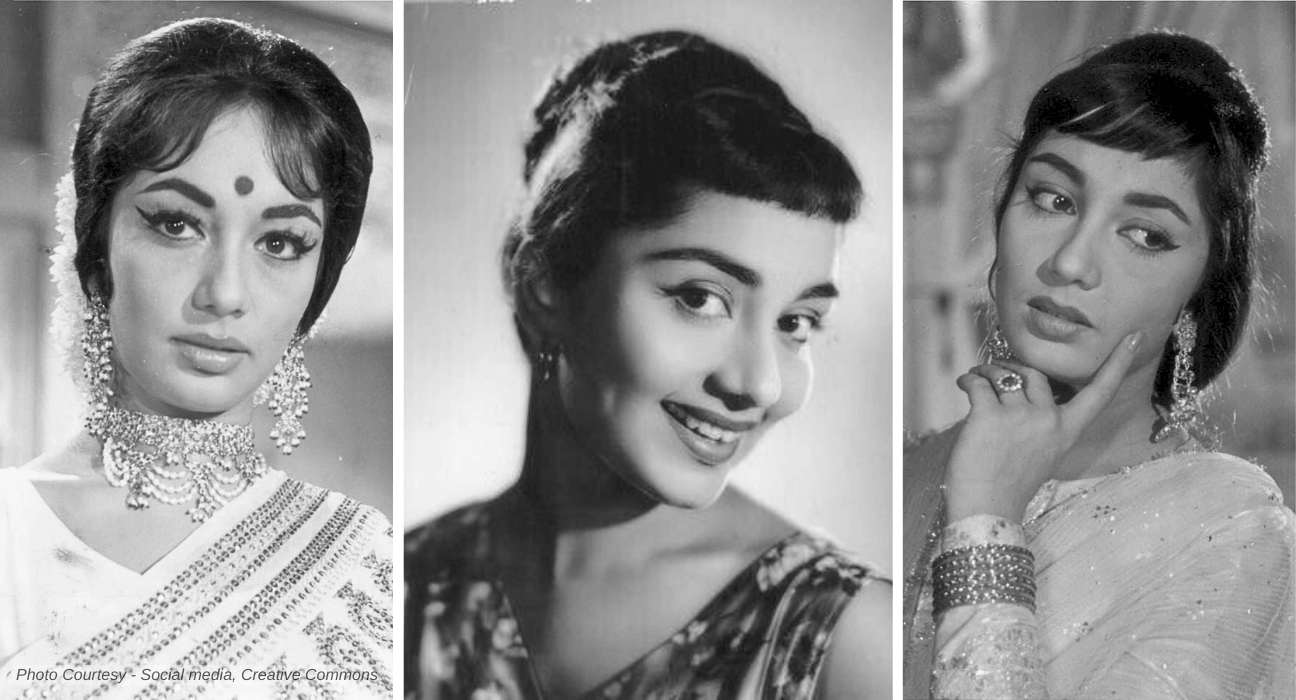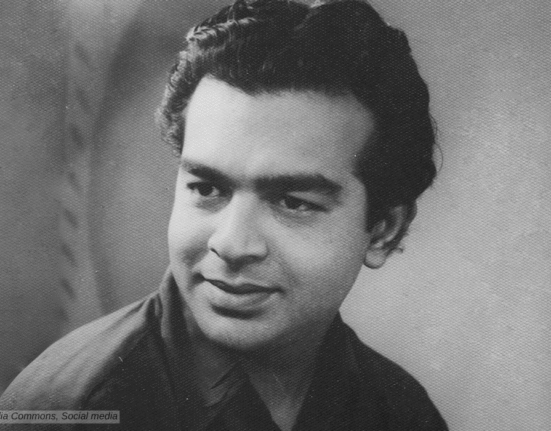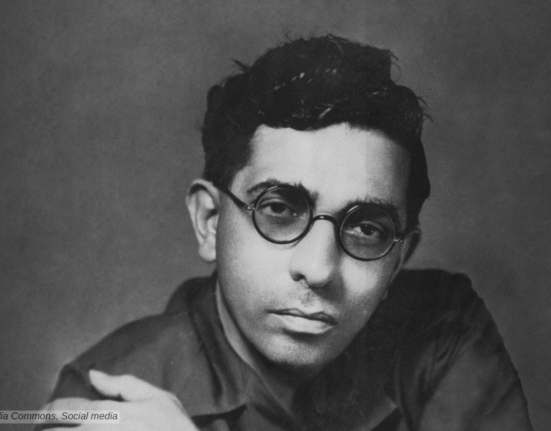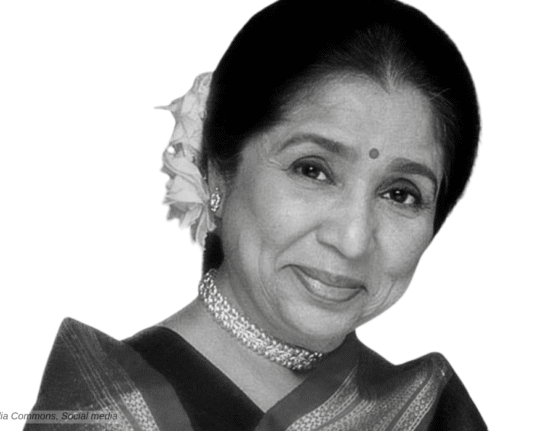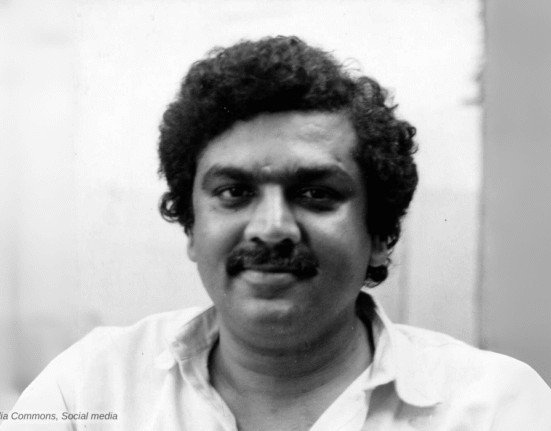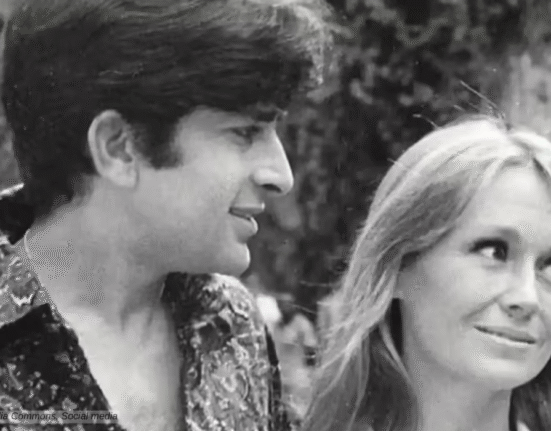Sadhana Shivdasani, the enchantress, was one of the finest actresses of Indian cinema, was noted for her exquisite beauty and trend-setting fashion statements. Known as “The Mystery Girl” for her suspense thriller trilogy “Wo Kaun Thi,” “Mera Saya,” and “Anita,” as well as films like “Mere Mehboob,” “Waqt,” “Arzoo,” and many more.
Early Life
Sadhana was born Anjali Shivdasani on September 2nd, 1941, in Karachi into the family of Shivram Shivdasani and Lali Devi. His father was the brother of famous filmmaker Hari Shivdasani, who was based in Bombay due to his work. Her family left Karachi and moved to Bombay during partition. Shivram Shivdasani was a die-hard fan of veteran actress “Sadhana Bose.” To honour her he changed the daughter Anjali’s name to Sadhna.
Sadhana went to Auxilium Convent School, Wadala, for her schooling. After her schooling, she joined Jai Hind College to pursue her bachelor’s in art degree. Sadhna was a fan of Nutan Ji and wanted to follow in her footsteps. It was the time when her family’s financial conditions were not very good. To help her family, she started working as a typist along with her studies. Soon, she have to drop out of college due to monetary reasons.
It was the time she started to think about going into films. Her first stint on screen was as a background dancer in Raj Kapoor’s “Shri 420,” in the song “Mud Mud Ke Na Dekh.” In 1958, she acted in the Sindhi movie “Abana,” directed by Arjun Hingorani. In the film, she portrayed the younger sister of the lead actress, Sheila Ramani.”
Breakthrough
Sadhna was very beautiful and soon noticed by many filmmakers, including Sashadhar Mukherjee of Filmistan studios. Mukherjee saw some publicity photos of her, shot for the promotion of Abaana.
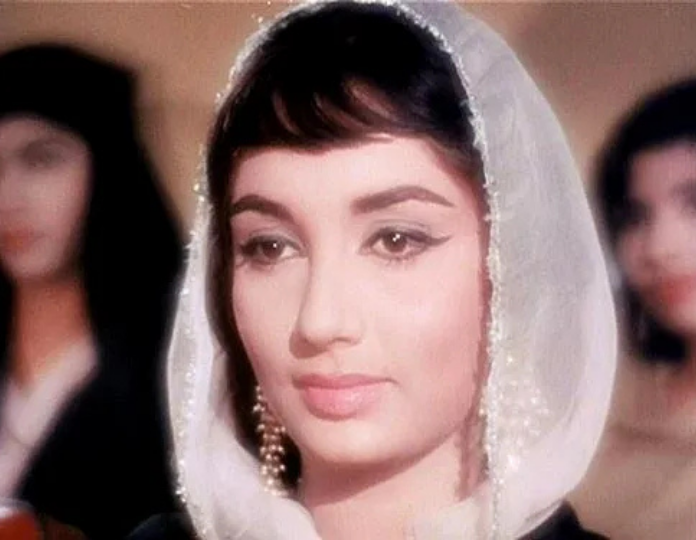
Impressed by her ethereal beauty and expressive eyes that spoke volumes, he decided to launch her. It was the time he was preparing for his upcoming launch vehicle for his son, Joy Mukherjee. The film was “Love in Simla” that introduced her to the silver screen, where her delicate charm blossomed.
The film also gave her the iconic Sadhna cut, a signature hairstyle, which became a cultural phenomenon. The “Sadhana Cut” is perhaps the most enduring legacy of her fashion influence. Inspired by Hollywood star Audrey Hepburn, this fringe haircut became synonymous with Sadhana after her appearance in the 1960 film “Love in Simla.” The style captured the imagination of a generation and became a rage among young women, who flocked to salons to emulate the look of their beloved star.
Following this success, Sadhana went on to establish herself as a leading actress with films like Bimal Roy‘s “Parakh (1960)” and “Prem Patra (1962),” Krishnan-Panju’s “Man Mauji (1962)” opposite Kishore Kumar, and Raj Khosla’s “Ek Musafir, Ek Haseena (1962)” with Joy Mukhjerjee.
Sadhana Shivdasani – The Enchantress
Early in her career, Sadhana paired with Dev Anand in “Hum Dono (1961)” and Asli-Naqli (1962). The duet from Hum Dono, “Abhi na jaao chhodkar,” is regarded as “one of the most romantic songs of all time.” “Tujhe Jeevan Ki Dor Se,” sung by both Mohammed Rafi and Lata Mangeshkar and “Tera Mera Pyar Amar,” sung by Lata Mangeshkar, were the highlights of Asli-Naqli.


1963 marked a turning point in Sadhana’s career with the release of “Mere Mehboob,” a romantic drama. The film not only won critical acclaim but also became a significant commercial success. The film was the highest-grossing Indian film of 1963. The film’s story revolves around Anwar Hussain Anwar, a young student played by Rajendra Kumar, who falls in love with a veiled woman, Husna Bano, portrayed by Sadhana. The narrative weaves through the complexities of social standing and the trials of love, culminating in the happy union of the lovers. The film also has Ashok Kumar, Nimmi, Johnny Walker, Ameeta, Johnny Walker, and Pran in pivotal roles.
The film’s music was composed by the legendary Naushad and written by Shakeel Badayuni. Film has evergreen classics like “Mere Mehboob Tujhe,” “Tere Pyar Mein Dildar,” “E-HHusn Jara Jaag,” “Mere Mehboob Mein Kya Nahin,” “Tumse Izhar – E – Haal Kar Baithe,” and “Yaad Mein Teri.” The success of Mere Mehboob made Sadhana one of the most sought-after actresses of her time.
Sadhana On Top Of the World
In this 1965 drama film Waqt, Sadhana appeared alongside Sunil Dutt. For her performance in this hit film, Sadhana got her second Filmfare nomination. The same year came one of her most memorable films, “Aarzoo.” Directed by Ramanand Sagar it also starrs Rajendra Kumar and Feroz Khan. The film was a legendary presentation of Sadhna’s beauty, charisma and style. It also had a beautiful emotional narrative, breathtaking locations, and mesmerizing songs. The film has iconic numbers like “Bedardi Baalma Tujhko,” “Aji Rooth Kar Ab Kahan Jaaiyega,” “Aji Humse Bachkar Kahan Jaaiyega,” “Ae Phoolon Ki Rani,” and “Chhalke Teri Ankhon Se.”
Then comes the Raj Khosla suspense trilogy, Woh Kaun Thi? (1964), Mera Saaya (1966), and Anita (1967). These movies have some of the finest music by Madan Mohan and songs like “Lagja Gale,” “Naina Barse,” Jhumka Gira Re,” and “Mera saya sath hoga.”
Some of her other notable films include Rajkumar (1964), Picnic (1964), Dulha Dulhan (1964), Gaban (1966), and Budtameez (1966).
Illness and Comeback
Sadhana’s vibrant career faced a health setback in the late ’60s due to hyperthyroidism, prompting a temporary hiatus. After completing her treatment in Boston, she returned in 1969. She made a successful comeback with hits like “Ek Phool Do Mali” and “Intaqam.”
In a cinematic pivot, Sadhana ventured into direction with “Geetaa Mera Naam” in 1974, marking a new chapter. Some of her other film after her comeback include Sachaai (1969), Ishq Par Zor Nahin (1970), Aap Aye Bahaar Ayee (1971), Dil Daulat Duniya (1972), Geeta Mera Naam (1974), Chhote Sarkar (1974), Vandana (1975), Amaanat (1977), and Mehfil (1978). Transitioning gracefully, she bid adieu to acting. Her final appearance came in “Ulfat Ki Nayi Manzilein” (1994), which had a delayed release.
Sadhana – The Itb Girl
Although Sadhana Cut became her signature, her influence on fashion wasn’t limited to her hairstyle. She was also instrumental in popularising the tight-fitting ‘churidar-kurta.” The outfit became a staple in women’s wardrobes across the country. Her elegant portrayal of characters in films like ‘Waqt’ (1965) showcased these outfits, which were admired for their grace and simplicity, and soon became a fashion statement that reflected the contemporary spirit of Indian women.
Sadhana built her stardom on the foundation of immense talent and an innate sense of style. She was one of the highest-paid actresses from the mid-1960s to the early 1970s, a testament to her popularity and the demand for her presence on screen. Her roles often portrayed strong, independent women who can take their own decisions; the finest examples of that are Mera Saya, Intequam, and Geeta Mera Naam. She worked with almost all the greats of the Hindi film industry of the time, including Dev Anand, Sunil Dutt, and Rajendra Kumar, further cementing her status as a leading lady of her era.
Off-screen, Sadhana was known for her grace and poise, often seen as a reflection of the characters she portrayed. Her appearances were events in themselves, as fans eagerly anticipated what fashion trend she would set next. Even after her retirement from the film industry, her legacy continued to influence fashion, with designers and stylists drawing inspiration from her iconic looks.
Personal Life
Sadhana fell in love with R.K. Nayyar, the director of her debut film “Love in Simla.” The couple tied the knot on March 7, 1966, and their partnership was both romantic and professional. Nayyar was a constant support in her career, and their union lasted until his death in 1995. Sadhana did not have children, and after her husband’s passing, she faced her later years with dignified solitude. After her retirement, she spent her life guarded with privacy. She once said that “I don’t want to be in front of a camera when I am old and vulnerable. I want people to always remember me as the beautiful lead.”
In a rare public appearance in 2014, Sadhana walked the ramp for a fashion show by designers Shaina NC and Vikram Phadnis, supporting the cause of cancer and AIDS patients. This moment was a powerful reminder of her enduring appeal and the impact she had on the fashion industry and beyond.
Later Days
In her later life, Sadhana Shivdasani faced a protracted legal battle over her tenancy rights and dealt with health issues that left a lasting impact. Yet, through it all, she maintained a grace and poise that endeared her to fans and colleagues alike.
Sadhana gets the IIFA Lifetime Achievement Award in 2002. She passed away on December 25, 2015, leaving behind a legacy that continues to inspire many in the film industry.
Sadhana Shivdasani’s legacy is not just in the films she left behind but also in the strength and dignity with which she lived her life. Her journey from the tumultuous days of partition to the heights of stardom and through the quiet battles of her personal life, is a narrative of resilience and grace—a true reflection of the enigmatic and enduring ‘Mystery Girl’ of Indian cinema.
Sadhana Shivdasani on IMDB



